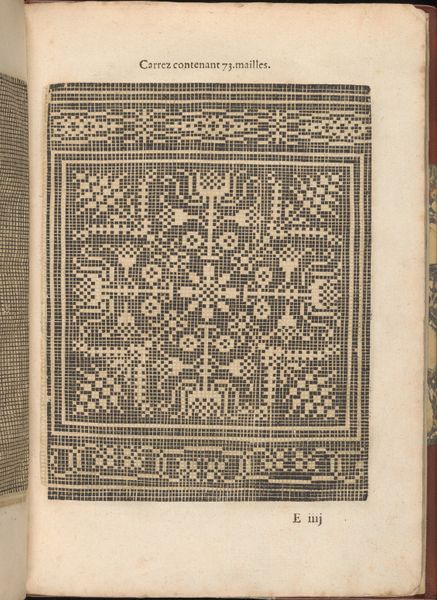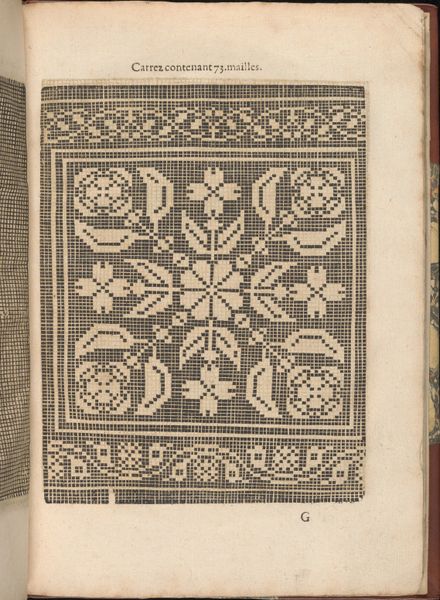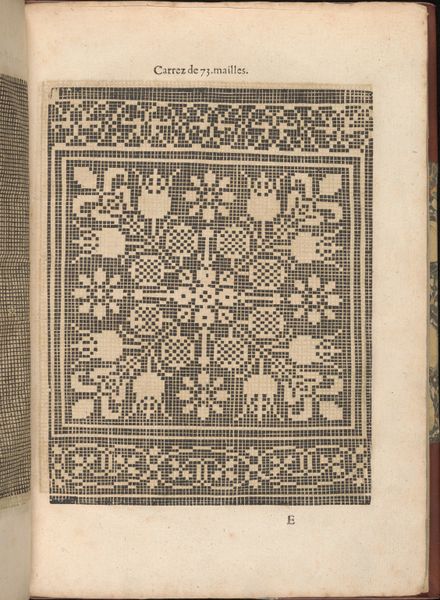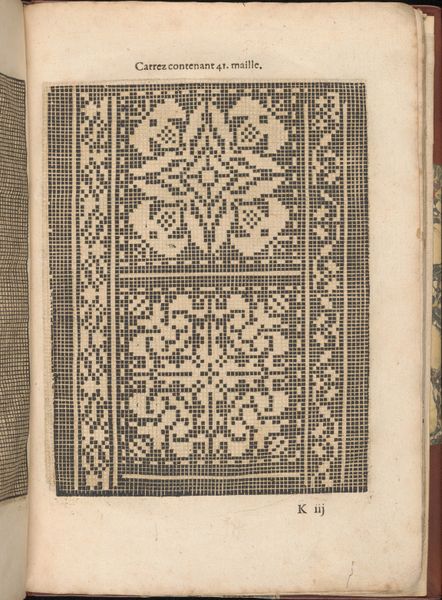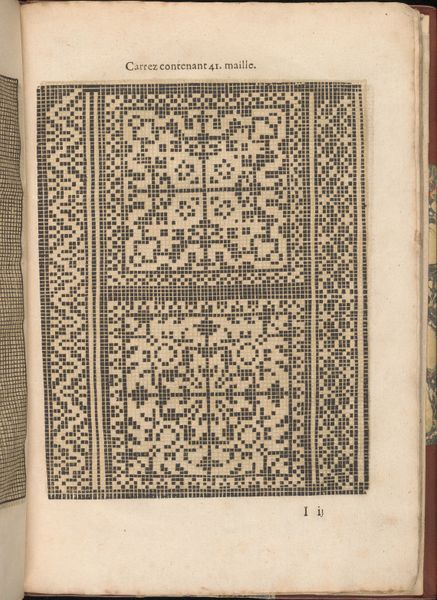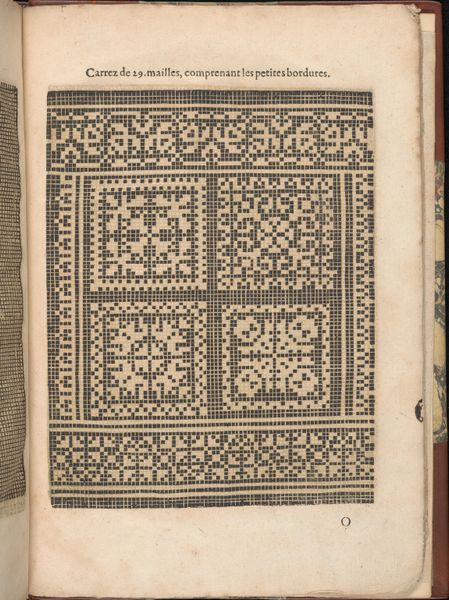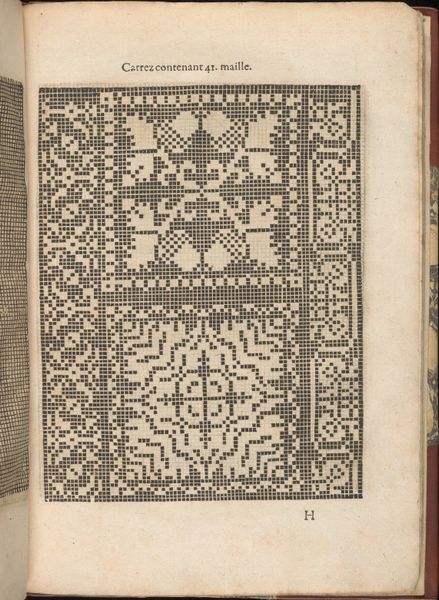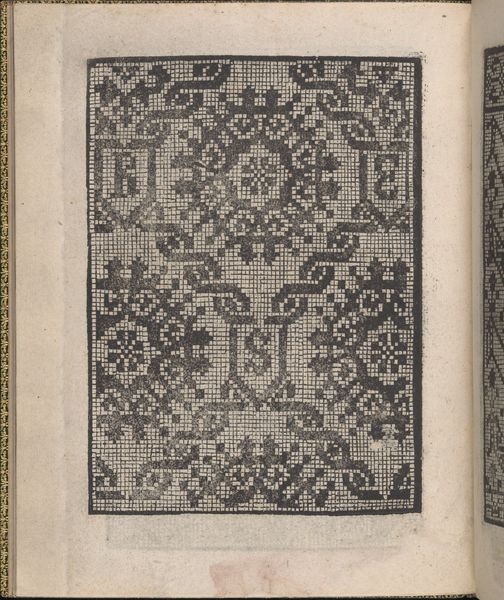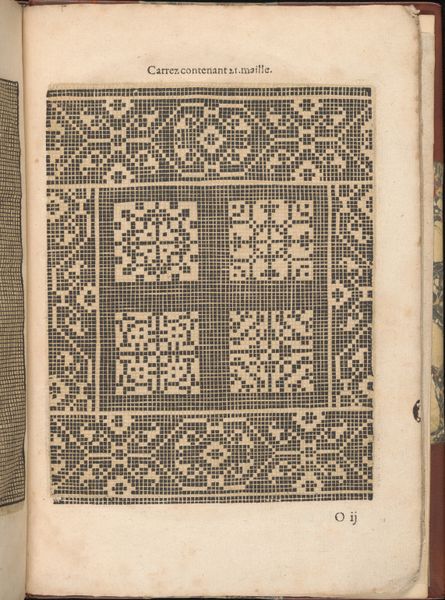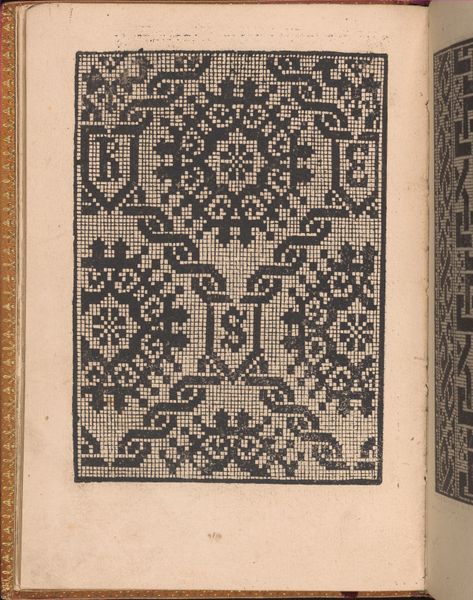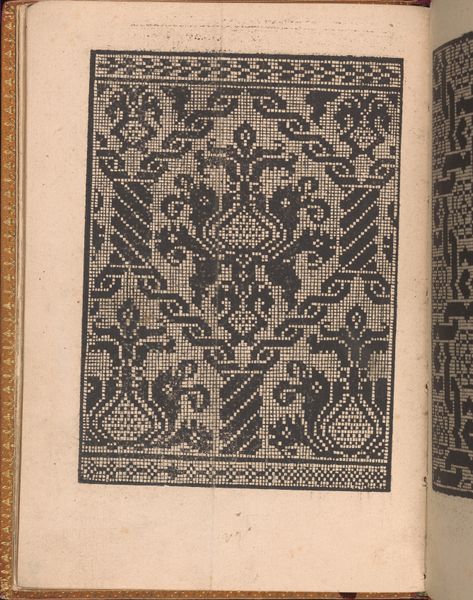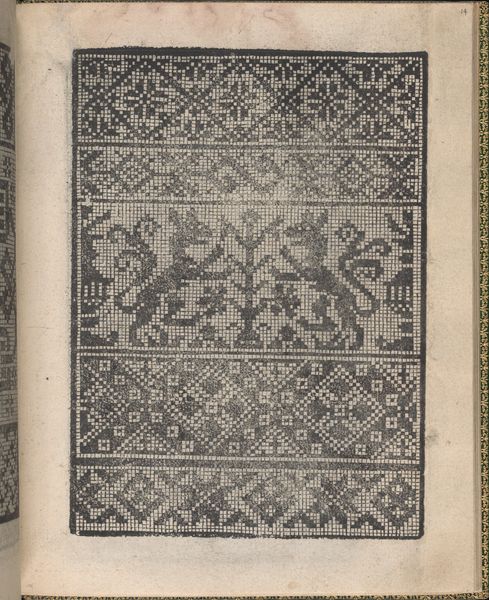
Les Secondes Oeuvres, et Subtiles Inventions De Lingerie du Seigneur Federic de Vinciolo Venitien, page 18 (recto) 1603
0:00
0:00
drawing, ornament, print, intaglio, paper, engraving
#
drawing
#
ornament
#
toned paper
#
ink paper printed
# print
#
book
#
intaglio
#
sketch book
#
paper
#
pen work
#
engraving
Dimensions: Overall: 9 7/16 x 6 1/2 in. (24 x 16.5 cm)
Copyright: Public Domain
Editor: So, here we have page 18 from Federico de Vinciolo’s "Les Secondes Oeuvres," published in 1603, an intaglio print that looks like a pattern for needle lace. I'm really struck by how incredibly detailed it is – it’s almost pixelated, but obviously predates digital art. What can you tell me about this intricate design in terms of its cultural significance? Curator: This print offers us a glimpse into the world of early 17th-century fashion and the burgeoning print culture that helped disseminate these styles. Consider that pattern books like this one played a critical role. They not only showcased desirable designs, influencing clothing and domestic textiles, but also empowered individuals to create them. The accessibility of these printed patterns democratized certain aesthetic trends, allowing wider social strata to participate in fashionable consumption. Editor: Democratized, huh? So, while this is just one page of a book, was it acting as a force, shifting class dynamics through clothing? Curator: In a way, yes. Think about it - before widespread printing, such intricate patterns were closely guarded secrets passed down within elite circles. This book essentially made that knowledge accessible, allowing individuals outside those circles to emulate the fashionable elite, blurring visual distinctions. Editor: That's a fascinating perspective! I always thought of historical fashion as very top-down. It's interesting to consider how prints like this could contribute to social change through visual culture. I'll definitely be looking at textiles and printed ephemera with fresh eyes now. Curator: Precisely! And remember, even the act of displaying this page within a museum space impacts its meaning. It elevates a utilitarian object into a piece worthy of aesthetic contemplation, thus re-contextualizing its socio-historical impact.
Comments
No comments
Be the first to comment and join the conversation on the ultimate creative platform.
